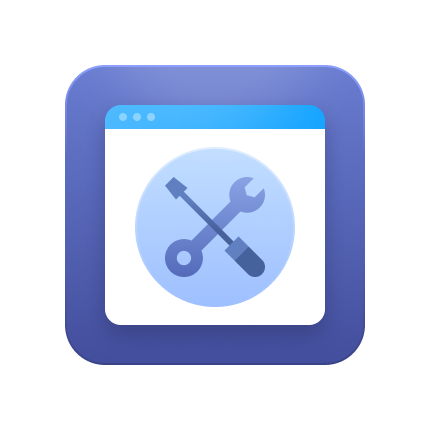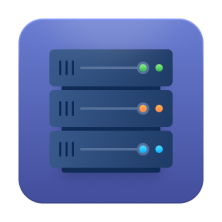From small enterprises to high-end brands like Nike, Christian Louboutin, and Vizio, the world’s biggest e-commerce sites are powered by Magento and use a Content Delivery Network or a CDN.
Does your Magento 2 store need a CDN? The answer depends on whether you want to achieve the following benefits:
- Latency decreased by around 80%.
- Pages loading 200% faster.
- The origin server load reduced by 60%, minimum.
Alluring, isn’t it? All these are the very real benefits you can get from using a Content Delivery Network (CDN) on your Magento store.
Below, we present a complete Magento CDN guide that instructs on how to set up a CDN on your Magento, overviews common errors, lists CDN benefits for Magento 2, and offers best practices for content delivery management.
What is a Magento CDN?
The speed of a Magento 2 store usually depends on the hosting – that is, where the site data is saved and the location of the Magento hosting provider. So, let’s assume that your Magento 2 e-commerce store is hosted with GoDaddy or SiteGround on their North American data centers.
If a user visits your e-store from within North America, they’ll see your website performing at its optimum in terms of loading speed because of its proximity to the source of the data. But if you get a visitor from Asia, the website will be slow because of the sheer distance between the source of the data and its target.
Content Delivery Networks (CDNs) make Magento 2 e-commerce stores better by helping them overcome this conflict so they deliver a better user experience. In essence, a Content Delivery Network is a net of distributed servers that are scattered around the world and route users’ requests to the server that is geographically closest to the visitor.
How Does a Magento CDN Work?
CDNs (Content Delivery Networks) maintain a global network of multiple servers, storing cached versions of your website’s content on edge servers located near users. This cached content includes essential components like product images, CSS and JavaScript files, stylesheets, videos, and more.
By distributing data geographically, CDNs reduce the distance data has to travel, which significantly speeds up delivering content for high-traffic websites and stores with a global audience.
Besides faster page loading, CDNs can handle traffic from multiple platforms like YouTube and Facebook. A high-quality, well-configured CDN also offers enhanced security against spam and malicious attacks. Other benefits include load balancing, which evenly distributes traffic, and built-in image optimization for quicker loading times.
7 Reasons Why Your Magento Store Needs a CDN
You can make a feature-packed website that showcases all your products correctly and give buyers a seamless checkout process – all with the help of Magento 2. However, a great CDN can further add to your website’s capabilities by making it faster and safer for visitors.
Below’s how that happens.
1. Faster Loading Times
CDNs drastically reduce load times by serving content from servers close to your users, ensuring even the most impatient shoppers stay engaged. This is particularly vital for e-commerce, where delays can directly impact sales.
2. Higher Search Rankings
Slow websites not only frustrate users but also get penalized by search engines. Google’s crawlers spend a limited amount of time indexing sites, and if your pages are slow, they may not be fully indexed, hurting your search ranking. A CDN ensures your pages load quickly, giving your site a better chance to rank higher in search results.
3. Enhanced User (and Mobile) Experience
Research shows that websites that load in under 2 seconds have an average bounce rate of 9% which can increase to 38% for pages that take 5 seconds to load. CDNs help reduce your bounce rate by improving load times, keeping visitors on your site longer, and encouraging them to explore more pages.
Given the rise of mobile shopping, CDNs also ensure fast loading times across all devices, enhancing mobile responsiveness and improving user experience for a growing mobile audience.
4. Reduced Bandwidth and Infrastructure Costs
The e-commerce website is a bridge between what you are selling and those who are willing to buy, so there should be an interrupted flow of information between the servers. But constant traffic can consume bandwidth, choking the flow of information.
The CDN technology can reduce the stress on bandwidth by letting you limit the data flow while fulfilling requests for data from visitors. In turn, Magento 2 gets the benefit of enhanced infrastructure and dynamic capacity that only CDNs can offer.
CDNs can further empower a Magento 2 store by keeping the costs down as cloud platforms tend to be a lot cheaper than traditional hosting domains – in fact, they are also more efficient and safer.
5. Scalability and Global Reach
CDNs offer dynamic scalability, meaning your site can handle traffic surges, especially during peak seasons or promotions. This ensures your Magento store remains stable even under heavy demand.
By delivering consistent loading times to users worldwide, CDNs also help your Magento store expand into international markets, offering the same high-performance experience to customers regardless of location.
6. Improved Security
Magento 2 comes equipped with robust security features like two-factor authentication and SSL support. However, CDNs provide an additional layer of protection, securing your site against DDoS attacks, spam, and other malicious threats with advanced TLS/SSL encryption.
7. In-depth Analytics
Magento 2 has great reporting features but the best CDNs for Magento can deliver even better web analytics, including page loading time, the time a particular visitor spends on a page, and overall performance of the website amongst many other metrics.
Paired with Google Analytics, these statistics can help you understand how your customers interact with your website so you can make their experience even better. This information can also help you carry out target market analysis to create marketing and advertising strategies that deliver results.
How to Choose The Best CDN for Magento
There’s no such thing as a built-in Magento CDN (or Adobe CDN, for that matter). To use CDN with a Magento 2 store, you need to set it up and integrate it manually. Thankfully, this is an effortless thing to do.
But to get started with CDN integration and configuration, you first need to decide which CDN to use. Popular content delivery network examples include:
- Amazon CloudFront – A component of Amazon Web Services (AWS). Its pricing is complex, and tiered, depending on CDN storage size, data transfer, and server locations.
- Akamai – Enterprise-level CDN solution with custom-quoted costs calculated based on the amount of data a CDN stores, services, and server locations.
- Cloudflare – Offers DNS settings and DDoS protection as part of its free plan. The cheapest paid plans of this CDN cost just $20.
In the CDN installation guide below, we'll focus on integrating Magento with Cloudflare – arguably the best CDN service for small to medium-sized businesses due to its free plan and competitive pricing. Moreover, it doesn’t use a CDN base URL – a prefix or domain in front of the original web address of your store. Instead, it integrates with your store, creates CDN URLs based on your existing domain, and doesn't require you to use a separate one.
Still, the process doesn't differ much for various other CDNs so you can get a basic idea even if Cloudflare isn't your Magento CDN of choise.
How to Set Up a CDN for Magento (based on Cloudflare)
Prior to the CDN setup, take time to evaluate your website's current performance. Use tools such as Google PageSpeed Insights or GTmetrix to assess your website's speed and functionality. This data will help you identify any performance bottlenecks that could benefit from CDN configuration.
Once you've completed this assessment, create an account with Cloudflare CDN and select a plan that aligns with your specific requirements.
Let's integrate the Cloudflare CDN with your Magento store:
- Add Your Website to Cloudflare. Once you've signed up, the next step is to add your Magento store to your Cloudflare account. You can easily do that by following the setup wizard provided by Cloudflare.
- Update DNS Settings. After you’ve added your website, Cloudflare CDN will give you a list with specific nameservers. Go to your domain's DNS settings and replace your current nameservers with the ones provided by Cloudflare. This change can take up to 48 hours to spread across the internet.
- Fine-tune Your CDN Settings. Within the Cloudflare control panel, you have the flexibility to customize settings based on the specific requirements of your website. These settings include options for caching, storage, CDN security features, traffic routing, and more. Regularly revisit and adjust these settings as needed to fine-tune your CDN's performance and security for your Magento store.
- Ensure Compatibility with Themes and Extensions. As part of your setup, it's critical to check for any potential conflicts with themes and extensions. Certain Magento themes or extensions might require custom configurations to ensure seamless compatibility with the Cloudflare CDN.
As soon as you’re done, don't forget to test your CDN. Use the website performance tools you’ve used before to measure the improvements in loading times and overall performance. No doubt, you’ll notice a significant difference from the results you had before the CDN setup.
How To Use CDN in Magento 2: Best Practices
Now that your CDN is up and running for your Magento store, here are some best practices for using CDN in your e-commerce:
- Employ Caching Strategies. Configure CDN caching settings to cache static assets like images, CSS, and JavaScript for longer periods. This will reduce the load on your servers.
- Optimize Images. Many businesses install a CDN for image optimization in the first place. Use your CDN's built-in image optimization features or extra solutions – like SpeedSize – to ensure that your CDN media loads quickly without sacrificing quality.
- Set Up Load Balancing. Implement load balancing with CDN to distribute traffic evenly and prevent server overload during traffic spikes.
- Use CDN Security Functionality. Take advantage of your CDN security features, including DDoS protection and Web Application Firewall (WAF), to protect your Magento store from threats.
- Rely on Monitoring and Analytics Tools. Leverage CDN's real-time analytics and monitoring tools to gain valuable insights into your website's performance and visitor behavior. Adjust your website as needed based on these insights.
Common Challenges and Troubleshooting
While the integration of any CDN with Magento is generally smooth, you might encounter some common challenges:
- "Cache Not Purged" or "Cache Invalidation Failed." Sometimes, the CDN cache may update improperly. Use cache purging tools to resolve this issue.
- "SSL Handshake Failed." Ensure that SSL is properly configured on both Magento and CDN to avoid mixed content issues.
- Extension Compatibility. Some Magento extensions may not work seamlessly with CDN. You may encounter errors such as "HTTP 502 Bad Gateway" or "HTTP 503 Service Unavailable." Reach out to extension developers or CDN's support for guidance.
- DNS Propagation Delays. if your DNS changes are still pending, you may see status messages indicating that DNS changes have not yet propagated. Be patient as it can take up to 48 hours to propagate fully.
Advanced Strategies for CDN Implementation
In addition to the typical recommendations, there are also several advanced strategies available for further optimizing your CDN and fully realizing its potential. These advanced techniques can help you leverage your CDN's capabilities to create a seamless e-commerce experience.
1. Dynamic Content Caching
While CDNs excel at caching static assets, they can also cache dynamic content with the right configurations. In Magento, dynamic content includes product pages, cart pages, and user-specific information. To cache dynamic content effectively:
- Leverage CDN's Full Page Cache (FPC) or Edge Side Includes (ESI) to cache dynamic blocks separately.
- Use Magento's built-in FPC functionality to create hole punches for personalized elements, ensuring that user-specific data remains dynamic while the rest of the page is cached.
2. HTTP/2 and HTTP/3 Support
Confirm that your Magento store and CDN are compatible with the latest HTTP/2 and HTTP/3 protocols. These protocols notably enhance data transfer efficiency, guaranteeing that your web pages load swiftly and efficiently. To enable http/2 or /3, make sure that:
- Your server is capable of supporting both HTTP/2 and HTTP/3.
- Your CDN settings are correctly configured to utilize these protocols.
3. Image Optimization and Adaptive Delivery
Image optimization in CDNs goes beyond basic compression. With CDN's image optimization tools, you can:
- Implement an adaptive image CDN approach, where your CDN automatically resizes and optimizes images based on the visitor's device and screen size.
- Leverage image format conversion to serve images in modern formats – like WebP – for browsers that support it, further reducing loading times.
4. A/B Testing
Many modern CDNs offer serverless functions that run at the network edge and can serve different content or design variations to different sets of visitors. With these functions, you can do A/B testing with product recommendations, checkout processes, or visual design. This feature allows you to measure the impact of certain elements on conversions and refine your e-commerce site based on data-driven insights.
5. Advanced Page Rules
The Page Rules feature enables you to create custom rules for how your CDN handles requests and responses. Here's how you can make the most of this feature:
- Use Page Rules to set up URL redirects, which can be handy for managing product page changes, promotions, or seasonal campaigns.
- Configure rules that bypass the cache for specific URLs, ensuring that certain dynamic content always stays up to date.
- Implement custom security rules and fine-tune your Web Application Firewall (WAF) policies to protect your Magento store from new vulnerabilities.
6. Customer Segmentation
Using a CDN, you can also segment your customers based on various criteria, such as location, device, or referral source. Having segments will allow you to:
- Serve personalized content and offers based on segments’ interests.
- Cater to specific demographics with tailored landing pages or pop-ups.
- Customize the user experience by showing region-specific products or promotions.
7. Geolocation-Based Content Delivery
By leveraging CDN's extensive network of servers around the world, you can adjust media content delivery based on the geographical location of your visitors. This strategy offers several advantages:
- Reduced Latency – Your CDN files are delivered from the nearest edge server to each visitor, minimizing latency and significantly improving load times.
- Customized Content – Content, such as currency, language, and product availability, can be automatically tailored to match the location of the user. This personalization enhances the user experience and boosts conversions.
- Optimize for Peak Times – Your content delivery can be scaled during peak traffic hours in specific regions, ensuring a consistent experience for worldwide users.
8. Multi-CDN Strategy
Many CDNs can seamlessly integrate with other CDN providers to create a multi-CDN setup. Consider relying on multiple CDN providers to improve availability, reduce the risk of downtime, and enhance global load balancing. With a multi-CDN strategy, you can also set up intelligent failover mechanisms that automatically switch between CDNs in case of network or server issues.
9. API Acceleration
If your Magento store relies on APIs for various functionalities, you can accelerate API requests in your CDN. Configure your CDN to cache and optimize API responses for reduced server load and improved response times in the client applications. This can be especially beneficial for headless commerce setups or applications that interact with your store's backend.
10. Third-Party Integrations
Consider exploring third-party integrations and extensions that could complement your CDN setup and enhance the capabilities of your Magento even further. Here’s a short list of integrations that you can find useful:
- Customer Relationship Management (CRM) Systems: Connect your CDN with CRM systems like Salesforce or HubSpot. This integration helps you gather data on customer interactions, enabling personalized marketing efforts and better customer relationship management.
- Marketing Automation Platforms: Many marketing automation platforms, such as Marketo or Pardot, can be integrated with CDNs. This enables you to streamline marketing campaigns and deliver targeted content based on user data and behavior.
- Email Marketing Services: Integrate your CDN with email marketing services like Mailchimp or SendGrid. This connection enables you to deliver image-rich emails efficiently and enhances the speed at which email content loads.
- Analytics Tools: Integrate web analytics tools like Google Analytics or Adobe Analytics with your CDN. These tools provide valuable insights into user behavior, traffic patterns, and website performance, allowing you to make data-driven decisions for marketing and optimization.
Parting Thoughts
Your Magento 2 store's success hinges on performance, user experience, and global reach. Visitors want top-notch visuals, HD videos, and a quick checkout. If your e-commerce site isn’t delivering it, someone else’s will.
Magento 2 has many benefits for merchants, developers, and customers alike. But these qualities can be further enhanced when the store is hosted with a CDN. Set up a CDN for Magento and enjoy the benefits it offers to your SEO, conversion rates, as well as infrastructure costs.



























